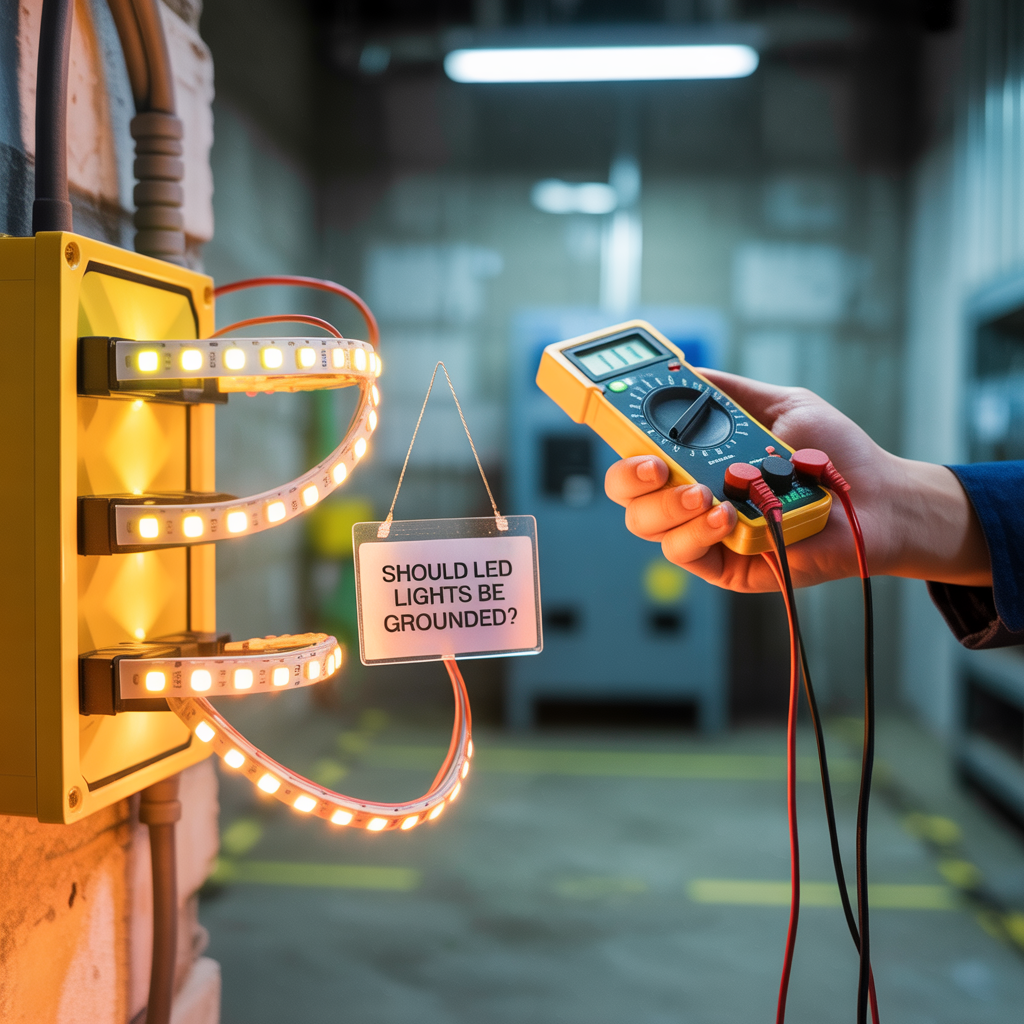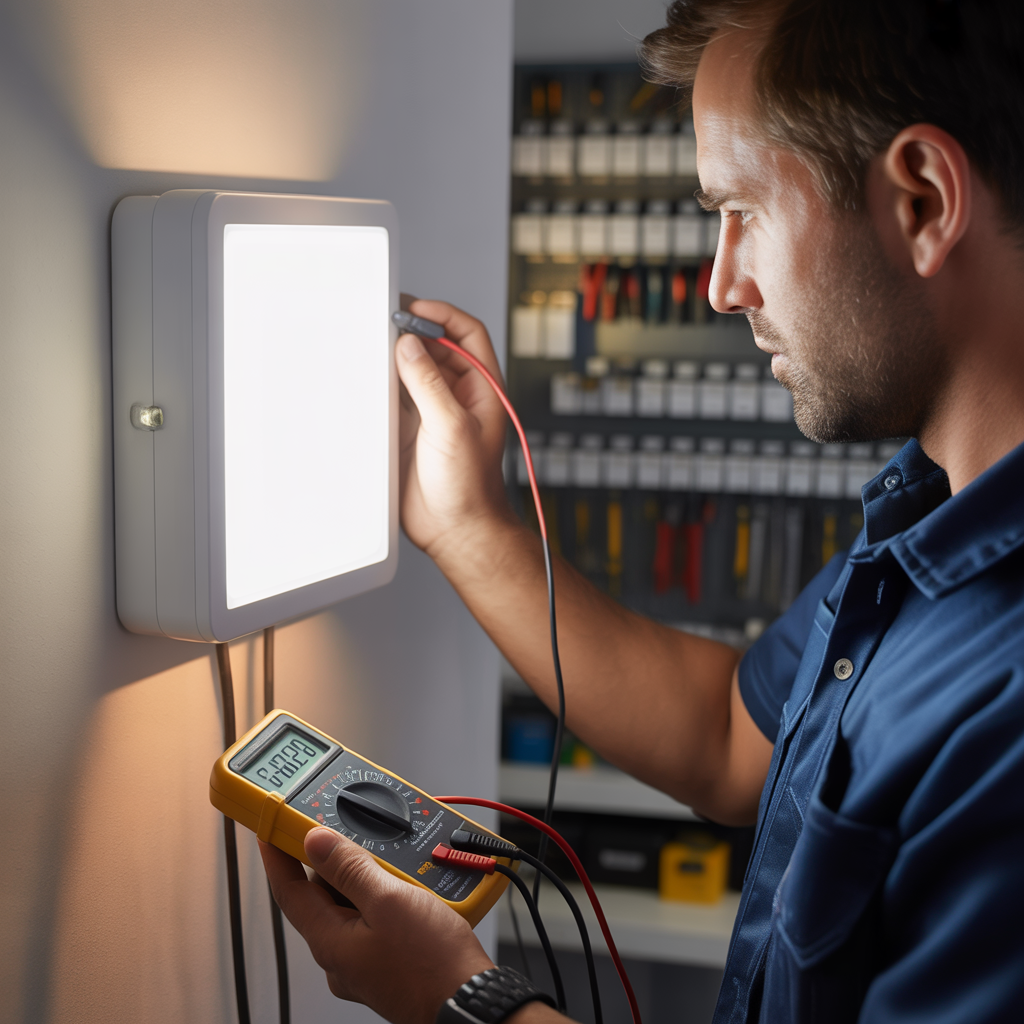Should LED Lights Be Grounded? Real Life Answer
Should LED lights be grounded? Yes, LED lights should be grounded if they have a metal housing or are part of a fixture that requires grounding for safety. Grounding helps prevent electrical shock in case of a fault. However, many low-voltage or plastic-housed LED lights may not require grounding. Always follow manufacturer instructions. Grounding, also…
Should LED lights be grounded? Yes, LED lights should be grounded if they have a metal housing or are part of a fixture that requires grounding for safety. Grounding helps prevent electrical shock in case of a fault. However, many low-voltage or plastic-housed LED lights may not require grounding. Always follow manufacturer instructions.
Grounding, also known as earthing, is a critical safety measure in electrical systems. It involves connecting a conductive path from an electrical circuit to the earth. This path provides a low-resistance route for fault currents to flow, preventing dangerous voltage build-ups and protecting people and equipment from electric shock.
Grounding serves several vital functions: It provides a safe return path for fault currents, preventing them from flowing through the electrical device and causing damage or injury. It also helps to dissipate static electricity, reducing the risk of electrical discharge. In essence, grounding acts as a safety valve, diverting potentially dangerous electrical energy into the earth.
Should LED Lights Be Grounded?

LED lights should be grounded if they have metal parts or the manufacturer requires it for safety.
Grounding and LED Lights: The Basics
LED Light Construction
LED lights are generally low-voltage devices, but they still require a safe electrical connection. Many LED lights are powered by transformers or drivers that convert higher-voltage AC power to the lower voltage DC required by the LEDs. The wiring within these drivers and the connections to the lights themselves need proper grounding.
Read More: Is Their Helium in LED Lights? [A Scientific Answer]
Types of LED Light Fixtures
There are various types of LED light fixtures, including recessed lights, surface-mounted lights, pendants, and more. Regardless of the type, the underlying principle of grounding remains consistent: a safe path to earth must be established for fault currents.
The Importance of Grounding LED Lights
Safety from Electric Shock
A properly grounded LED light significantly reduces the risk of electric shock. If a fault occurs within the light fixture or its driver, the ground wire will provide a path for the fault current to flow directly to earth, protecting anyone who might touch the fixture.
Preventing Electrical Fires
Grounding helps to prevent electrical fires by reducing the likelihood of overheating and arcing. A ground fault, if not properly handled, can generate excessive heat, potentially igniting flammable materials near the light fixture. Grounding provides a safe outlet for excess current, minimizing this risk.
Protecting the LED Driver
Many LED drivers incorporate surge protection and other safety features. Grounding complements these features, enhancing the protection offered to both the driver and the LEDs themselves.
Read More: How to Solder USB Connector to LED Light? Exact Answer & Guideline
Different Grounding Methods

Three-Wire Grounding System
This is the most common grounding system used in residential wiring. It comprises three wires: a hot wire (carrying power), a neutral wire (returning power to the source), and a ground wire (providing a path to earth).
Ground Fault Circuit Interrupters (GFCIs)
GFCIs are safety devices that detect ground faults and quickly interrupt the power flow, preventing shocks and fires. They are often required for outdoor and bathroom fixtures, and are recommended for LED lights in high-moisture areas.
Grounding Rods
Grounding rods are metal rods driven into the earth to provide a stable and reliable connection for the grounding system. They are an essential part of a complete grounding setup.
Read More: 12 Excellent Half Vaulted Ceiling Lighting Ideas
Installing Grounded LED Lights
Identifying Grounding Wires
Ground wires are usually bare copper or green-coated wires. Carefully identify the ground wire during installation. Miswiring can be dangerous.
Connecting Ground Wires
Connect the ground wire securely to the ground terminal on the light fixture and the ground wire in the electrical box. Make sure the connections are tight and corrosion-free.
Testing the Grounding
After installation, test the grounding using a non-contact voltage tester. This will confirm that the light fixture is properly grounded and safe to use.
What Happens if LED Lights are Not Grounded?
Increased Risk of Electric Shock
Without grounding, fault currents could flow through the light fixture and its metallic parts. This poses a serious risk of electric shock to anyone touching the fixture. The risk increases significantly in damp environments.
Higher Chance of Fire Hazards
A non-grounded system may lead to overheating due to fault currents passing through the device and its cabling. This can cause ignition of flammable materials nearby, leading to a fire.
Reduced Lifespan of LED Lights
Without proper grounding, surges in voltage can damage the sensitive components within the LED driver and lights, shortening their lifespan.
Comparing Grounded and Ungrounded LED Lights
The table below summarizes the key differences:
| Feature | Grounded LED Lights | Ungrounded LED Lights |
|—————–|——————————————|—————————————–|
| Safety | Significantly safer | Significantly higher risk of shock and fire |
| Fire Risk | Significantly lower | Significantly higher |
| Lifespan | Longer | Shorter |
| Compliance | Meets electrical codes | May violate electrical codes |
Troubleshooting Grounding Issues
Identifying Grounding Problems
Signs of grounding issues include flickering lights, buzzing noises, or a burning smell near the light fixture. Always test the lights with a voltage tester to ensure the circuits are properly grounded.
Fixing Grounding Problems
Repairing grounding issues may require re-wiring the circuit, replacing the light fixture or its driver, or upgrading the grounding system. Always consult a qualified electrician for complex repairs.
Grounding LED Lights: Legal and Regulatory Aspects
Electrical Codes and Standards
Building codes and safety standards usually mandate the grounding of all electrical installations, including LED lighting. These regulations are in place to protect people and property.
Consequences of Non-Compliance
Failing to comply with electrical codes can result in fines, insurance claims rejection and potentially legal liability in case of accidents or injuries.
Choosing Grounded LED Lights
Look for Three-Wire Connections
Always choose LED light fixtures and drivers with three-wire connections. Ensure the ground wire is properly connected during installation.
Check for Safety Certifications
Look for safety certifications, such as UL or ETL listings. These certifications indicate that the product meets specific safety standards.
Frequently Asked Questions
What are the long-term consequences of not grounding LED lights?
Long-term consequences can include premature failure of the LED driver and lights, increased risk of fire, and potentially dangerous electrical shocks. Regular maintenance and careful installation to follow safety standards significantly reduce these risks.
Can I ground LED lights myself?
While you might be able to ground simple LED fixtures, it’s crucial to remember that electrical work can be dangerous. If you are not experienced with electrical work, it’s best to hire a qualified electrician. Improper grounding can lead to serious safety hazards.
Are all LED lights grounded by default?
No, not all LED lights are grounded by default. The presence of a ground wire and its proper connection depends on the fixture design and the installation. Always check the wiring and installation to ensure proper grounding.
What if my LED lights are already installed and not grounded?
If your LED lights are already installed and not grounded, consult a qualified electrician immediately to address the issue. Do not attempt to fix it yourself unless you have significant electrical experience.
Final Thoughts
The question, “Should LED lights be grounded?” has a definitive answer: Yes! Grounding is a critical safety measure that protects against electric shock, fire hazards, and damage to the LED components. Proper grounding is essential for ensuring the longevity, efficiency, and safe operation of your LED lighting. By understanding the importance of grounding, the installation process, and the potential consequences of non-compliance, you can create a safer and more reliable electrical system for your home. If you have any doubts or concerns about the grounding of your LED lights, consult a licensed electrician to ensure the safety of your home and family. Don’t compromise on safety; ensure your LED lights are properly grounded.

